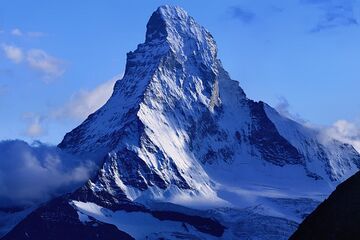Lutharian Alps: Difference between revisions
No edit summary |
Drambenburg (talk | contribs) (→Ranges) |
||
| Line 64: | Line 64: | ||
==Ranges== | ==Ranges== | ||
{| class=wikitable | |||
! style="text-align:left;"| Name | |||
! Location | |||
|- | |||
|Eastern Range | |||
|[[Greater Lutharia]] | |||
|- | |||
|Avergonese Alps | |||
|[[Avergnon]] | |||
|- | |||
|Western Alps | |||
|Aurraine | |||
|- | |||
|[[Drambenburgian Alps]] | |||
|Drambenburg | |||
|} | |||
==Hydrography== | ==Hydrography== | ||
Revision as of 20:41, 8 December 2021
| Lutharian Alps | |
|---|---|
 Cervin's North Face | |
| Geography | |
Lua error in Module:Location_map at line 510: Unable to find the specified location map definition: "Module:Location map/data/Lutharian Alps Range.png" does not exist.
| |
| Location | Southwest Euronia |
| Geology | |
| Age of rock | 45 million years |
The Lutharian Alps are a collection of major and minor mountain ranges running along the Ilhavean fault line, which fused sometime in the Miocene Epoch. The Alps represent major geographic, geological, and topographic features of Southwestern Euronia. The Alps extend over several countries, including Lutharia, Avergnon, Drambenburg, Angouburg, Shoassau, and Auraine. Along with the Lutharian Plateau, the Lutharian Alps compose the majority of the geographic structure of Lutharia. While the Eastern Range is entirely in Lutharia, the Western and Southern ranges, which represent the vast majority of the range system, extend significanlty into Auraine and the Drambenburgian Peninsula.
The highest mountain peaks in the ranges include several of the tallest mountains in Euronia, with Mount Cervin (14,692') in Lutharia, Weißburg (15,777') in Drambenburg, and Barre Des Ecrins (13,568') in Avergnon.
Since the middle ages, passage over the Alps has played a major role in both trade and war, having a massive sway on historical connection between the major powers of Mayotte, Drambenburg, and Avergnon.
Geography
Ranges
| Name | Location |
|---|---|
| Eastern Range | Greater Lutharia |
| Avergonese Alps | Avergnon |
| Western Alps | Aurraine |
| Drambenburgian Alps | Drambenburg |